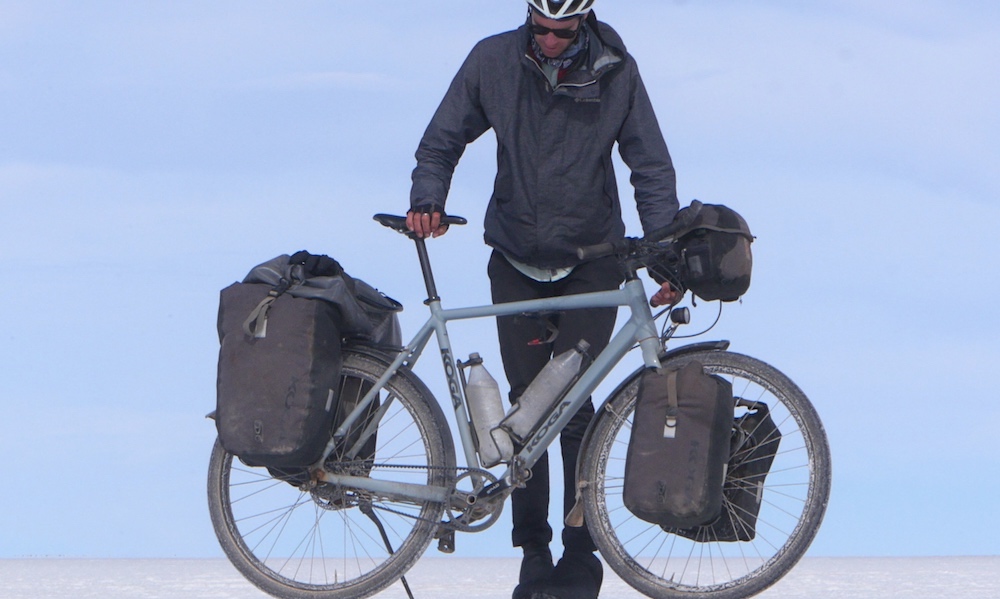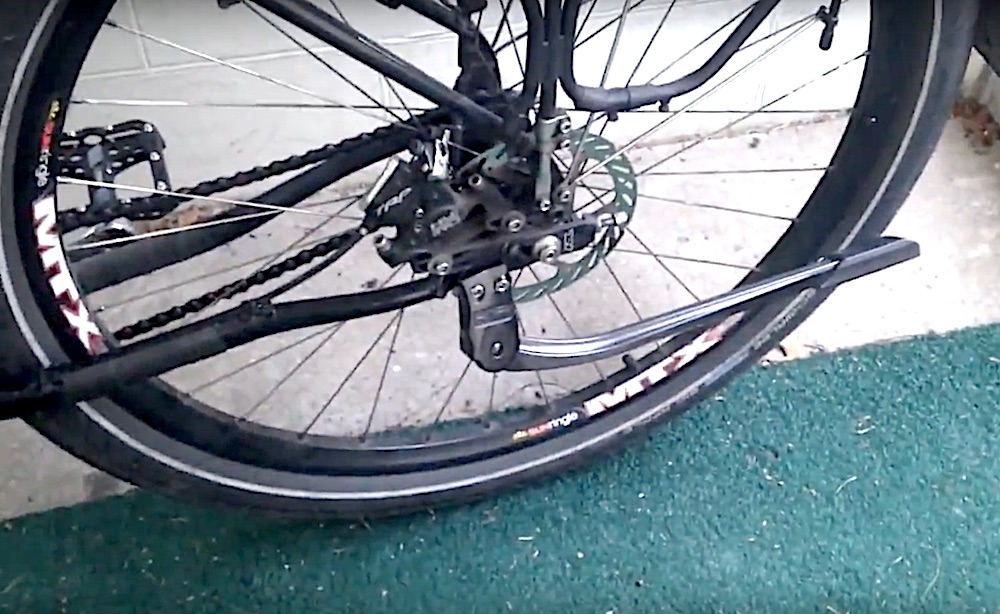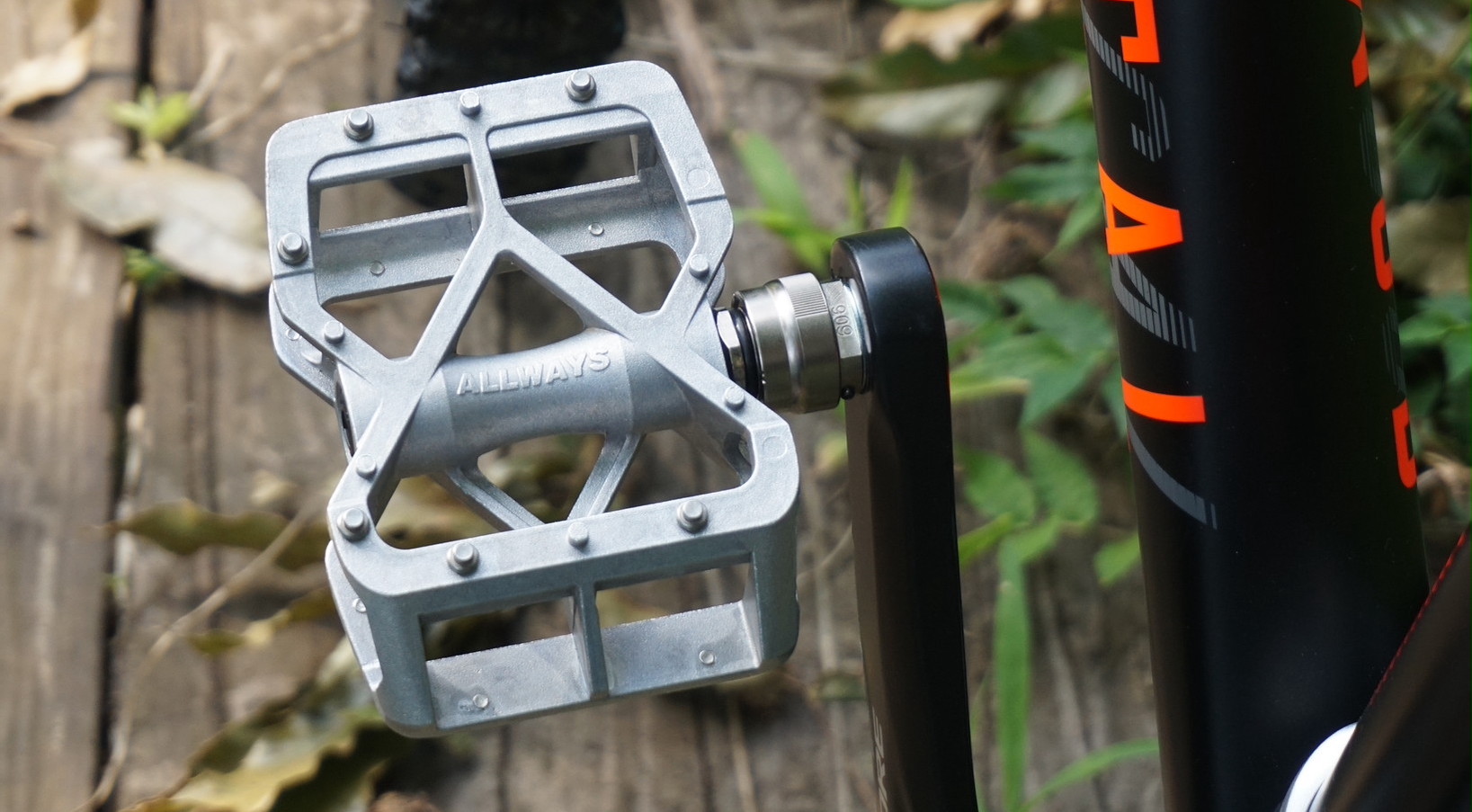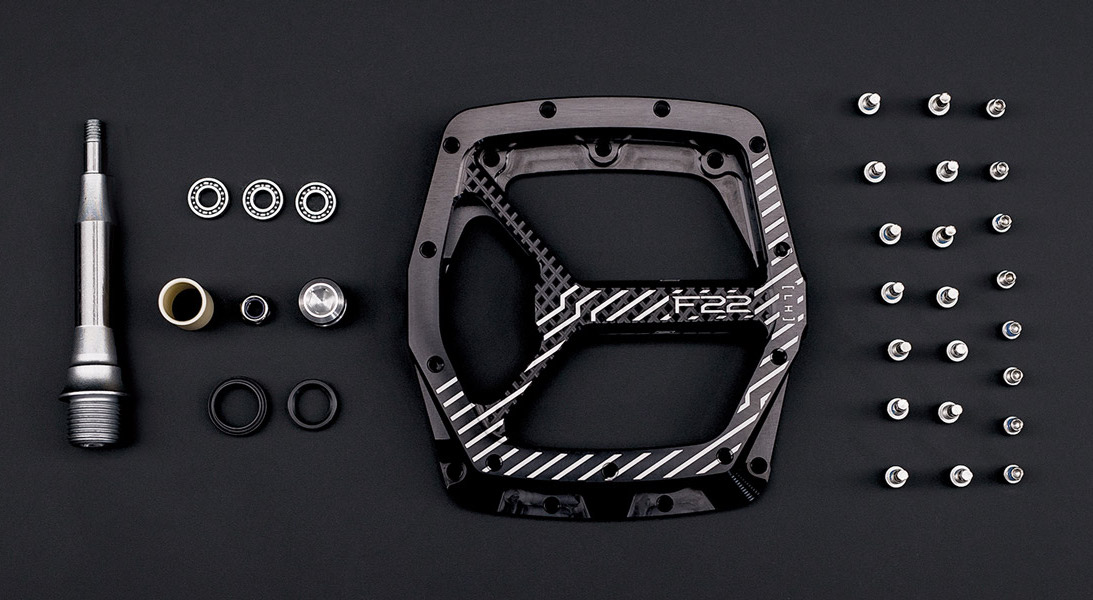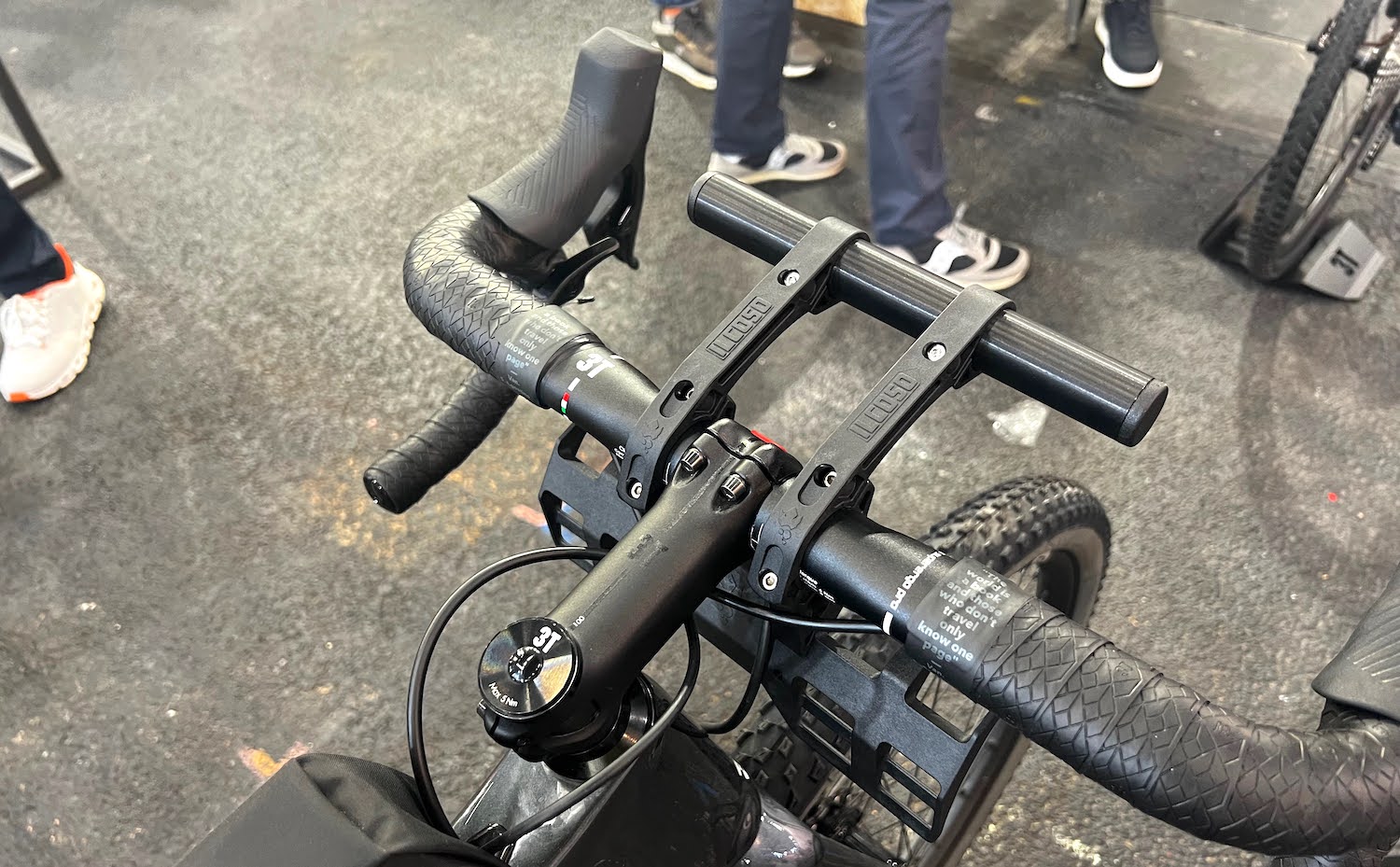Table of Contents
I was close-minded about kickstands for a long time.
I intentionally left the kickstand box unchecked on the order form for my KOGA WorldTraveller-S touring bike. I hadn’t needed one for the previous 10 years of touring, so why would I need it now? But when I picked up the bike there was one fitted. KOGA said, “just try it Alee, if you really don’t like it, you can throw it away”.
I reluctantly accepted their request.
Skip forward a few months into my trip and I broke a bolt on my new kickstand. I had to remove it for a while, and it was then that I realised how much I missed having it. I use it every time I get off the bike; to snack, to take a video or grab something from my bags. I’m now a complete convert and I don’t think I’ll go on another long-term bike tour without one.
Ok, it’s time to fill our brains with kickstand knowledge.
Why Should You Use A Kickstand?
Firstly, they help you to load your bike. There’s no leaning it against yourself or another object while you mount your panniers or bikepacking bags. It’s pretty much like you have a personal assistant holding your bike for you.
They’re also super quick to deploy. I often stop abruptly, flick my stand down and take an opportune photo. Or sometimes I grab my rain gear from the top of my pannier just as the drops start to pelt.
Look, you might have the same view of kickstands as I had six months ago: they’re simply unnecessary. Or maybe you had a bad experience with a kickstand previously. Perhaps it deployed itself while riding, snapped in half, damaged your frame or banged into your pedals…
Those things suck, but I can assure you the best kickstands listed here are out of the way, silent, durable, quick to use and will add just 250 grams (0.5lbs) to your touring bike.
Stabilizing The Front Of The Bike
Before I get into the kickstands themselves, it’s important to understand how to stabilize a touring bike, especially if you have a front load and a centre-mount kickstand.
On almost every surface your front wheel will want to tilt as the bike leans, and this results in the handlebars turning as much as 180-degrees, or worse, your bike falling over.
Here are some options to ensure you get the best bike stability with your kickstand.
Brake Bands
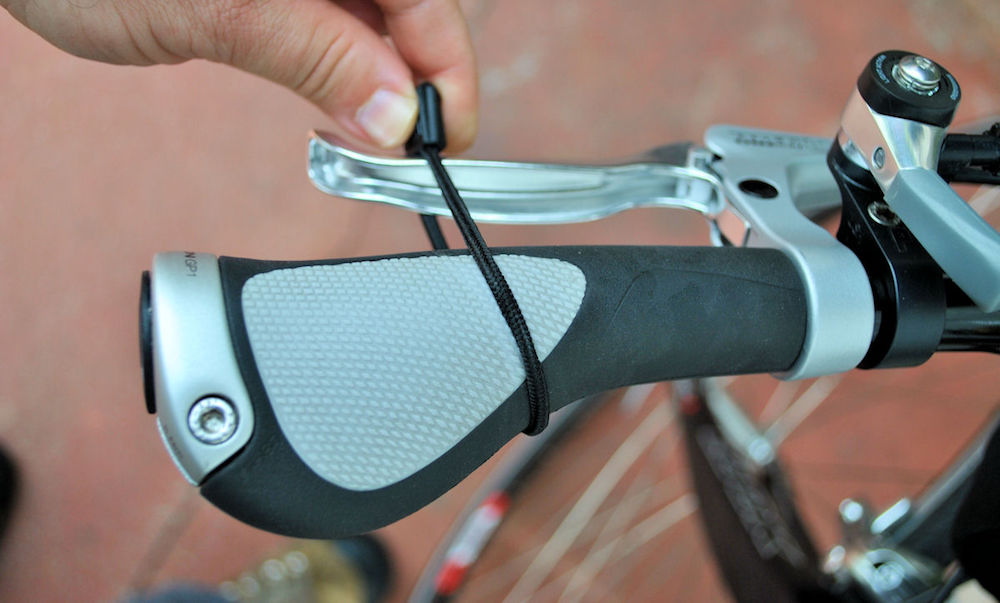
Firstly, it’s not a bad idea to stabilize your bike with something that pulls the brake lever(s).
Click-Stand makes some neat brake bands, but you can also use hair ties or sections of an inner tube. A reader has also pointed out that bikes fitted with ‘European-style’ frame locks will also prevent your bike from rolling.
Steering Locks
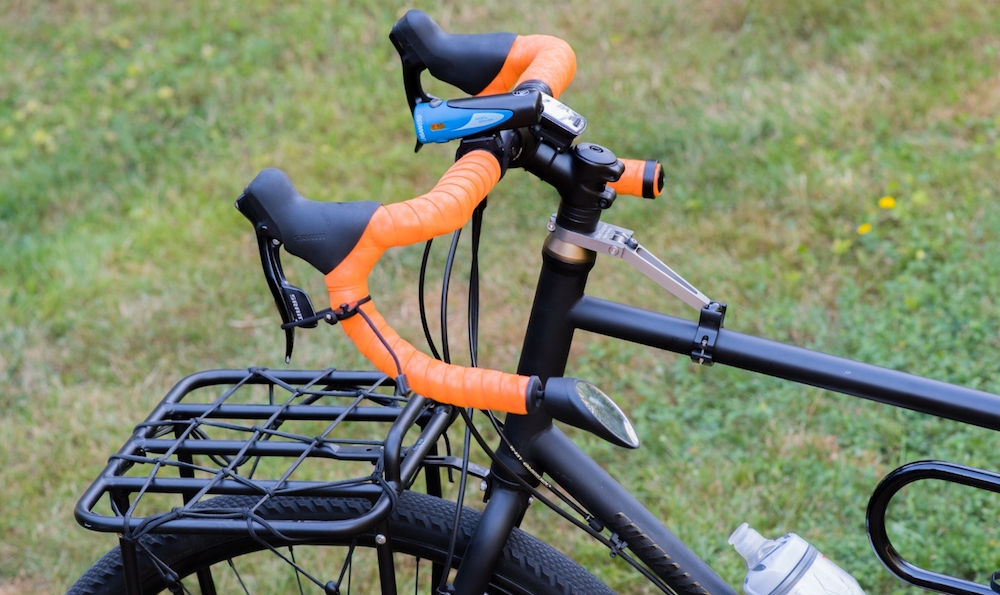
SteerStopper makes a really neat component that’s designed to stop your handlebars from turning.
By all accounts, the people who use them, love them. A side benefit of this device is that you can push your bike up a hill without touching the handlebars.
Steering Stabilizers
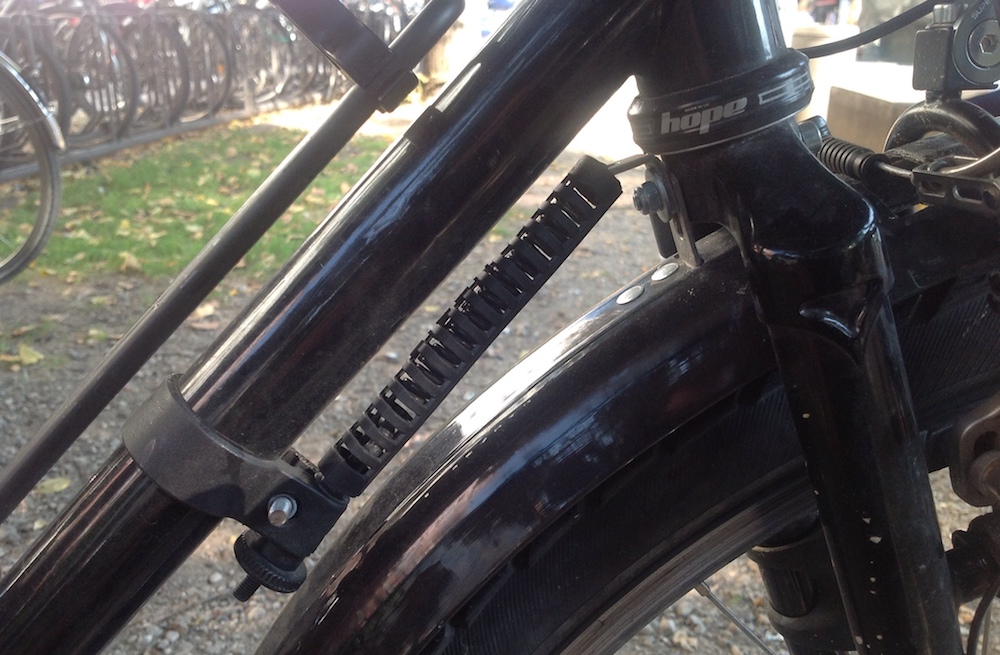
A steering stabilizer connects a spring from your downtube to your fork crown.
They offer a self-centring action to the front wheel which prevents it from turning more than 45 degrees. This also makes it easier to load a front porteur rack or basket. Velo Orange ($15 on Amazon) and Hebie are the most common aftermarket brands for steering stabilizers.
Front Rack Kickstand
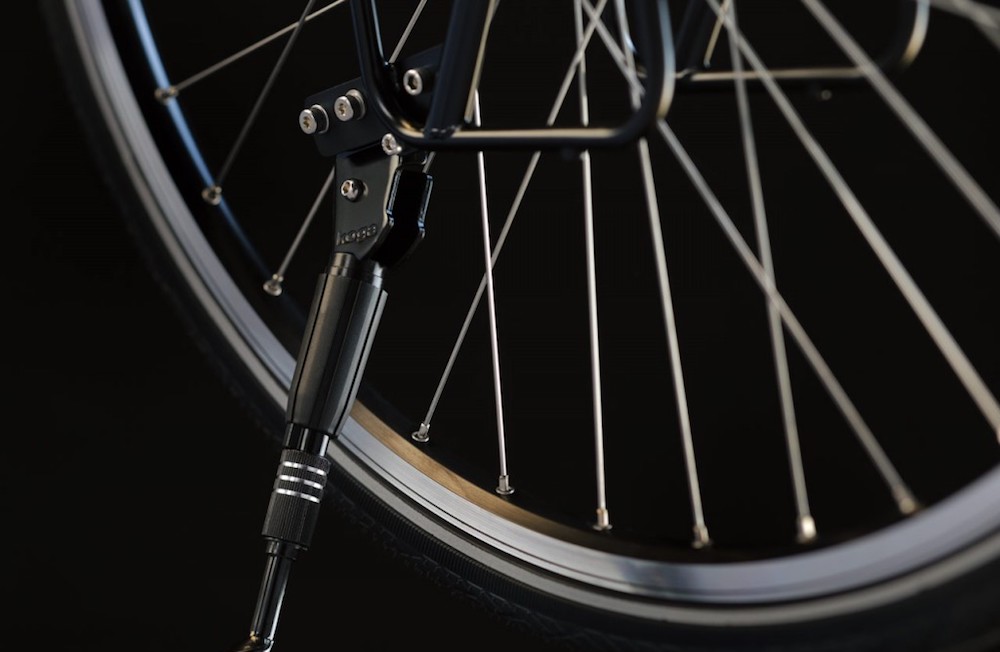
If you decide not to use any of the locks or stabilizers mentioned above, the Tubus Lowrider Kickstand provides additional stability to the front of your bike. They fit the Tubus Tara, Duo, Ergo and Nova lowrider rack models.
Integrated Steering Limiter
Some touring framesets like my KOGA WorldTraveller-S have components inside the headtube that prevent the handlebar from turning more than 45 degrees in either direction (see my KOGA bike video at 2:55 for an example).
I think these are the neatest solution for helping to somewhat stabilize your bike, but they’re limited to only a handful of touring bike manufacturers.
Kickstand Weight Limits
If you’ve broken a decent quality kickstand, it’s likely that you’ve exceeded its weight limit.
Most kickstands have a maximum capacity of 18-25kg, which is pretty easy to exceed with double leg kickstands in particular, given the rear load is suspended from the ground. Determining the weight capacity for a single leg kickstand is a little more difficult, so I’ll recommend the following…
Total bike+gear+food+water weight:
Under 40kg – 18kg capacity kickstand
40kg or higher – 25kg capacity kickstand
If you’re planning on going on a bike trip where you need to carry 10+ days of food and a decent amount of water, you might be best served with the 35 to 80kg capacity models.
Rear Mount Kickstands
As most touring bikes have a decent amount of weight over the rear wheel, this kickstand type is undoubtedly the most stable given its ultra-wide stance.
You may need to cut down or adjust the length of your kickstand so that your bike can lean on an angle of approximately 15 degrees from vertical. A steering stabilizer of any kind is less necessary with this kickstand design.
If you’re a front-loader with a minimal rear-load (eg. front panniers with a rear bikepacking seatpack), skip past these rear stands to the double leg kickstands below.
Integrated KSA-18 Kickstand Mounts
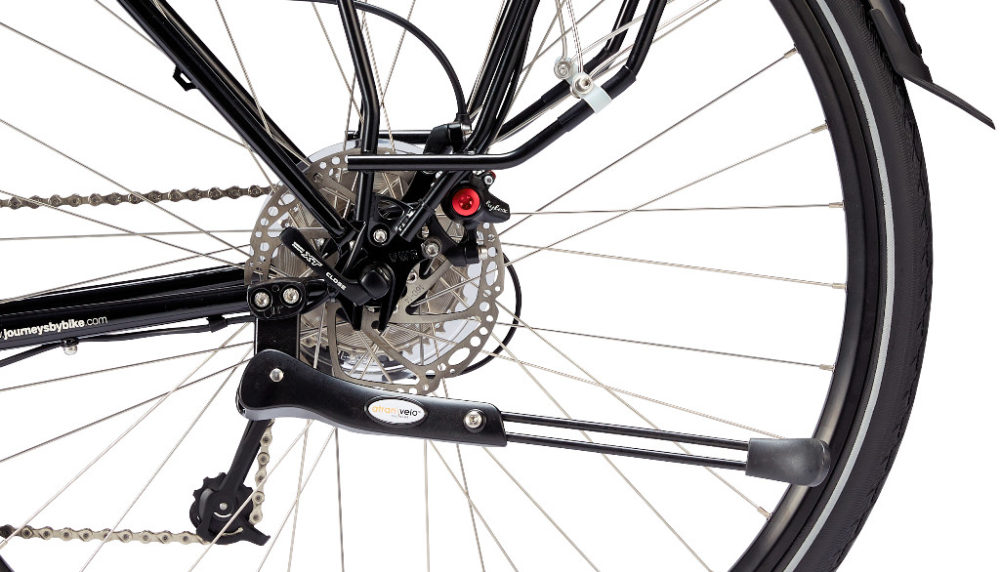
This has got to be the neatest rear kickstand option for a touring bike. The rear dropout or chainstay is designed with two mounting holes which sit 18mm apart.
The best frames will use a nut and M6 bolt design so that if you accidentally snap a bolt, you can easily remove it from your frame. Unfortunately, many KSA-18 frames have an M5 thread built into the mount, so you’ll need to constantly check bolt tension to ensure the bolts don’t bend and eventually break inside your frame.
Recommended: Hebie FIX 18 (30kg), Pletscher Comp 18 (25kg), Comp 18 Zoom (18kg) or Comp 18 Flex (50kg)
Integrated KSA-40 Kickstand Mounts
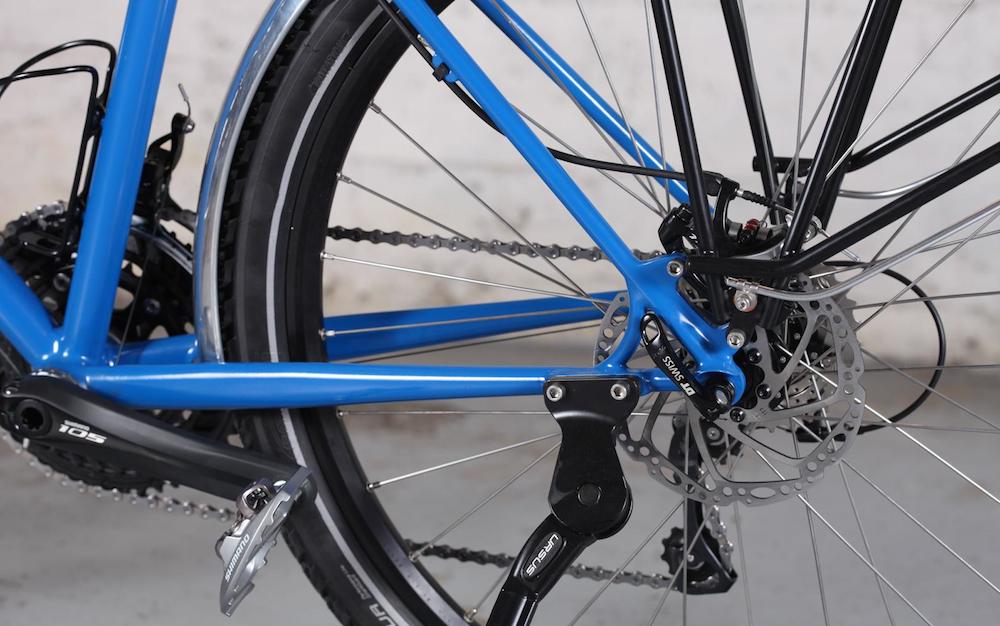
This is an older, and therefore, less common standard with the mounting holes spaced 40mm apart. There are still ample kickstand options available.
Recommended: Hebie FIX 40 (30kg), Pletscher ESGE Comp Zoom 40 (18kg, $27 on Amazon), Comp 40 (25kg) or Comp 40 Flex (50kg)
Adjustable Rear Kickstands

If you don’t have the KSA mounting points on your frame, here is your alternative.
Adjustable rear kickstands will fit most rim brake touring frames (careful if you have a spoke holder) but will only sometimes clear a disc brake caliper that’s fitted inside the rear triangle (seatstay mounted disc calipers are fine).
The Pletscher ESGE Multi kickstand tends to fit bikes with chainstay disc calipers a little better; I’ve annotated a photo with the potential bolt locations HERE. But ultimately it will depend on the brake mount, brake model, chainstay diameter and dropout shape.
Recommended: Pletscher ESGE Multi-Zoom (18kg), ESGE Multi-Flex (50kg), Hebie FOX (25kg).
Centre Mount Kickstands
Centre mount kickstands are probably the most common kickstand type, in fact, many touring frames come with an integrated kickstand plate so that you can fit one up nicely. I highly recommend using something to stabilize your handlebars with any of the below kickstands. If your frame lacks a mounting plate, you’ll need to be EXTREMELY careful when tightening a centre kickstand to your chainstays – many frames have been destroyed from overtightened kickstand bolts.
Single Leg Kickstands

Single leg kickstands aren’t quite as stable as rear kickstands but are a great option for bikes with a kickstand plate. They’ll work very well when deployed on uneven surfaces, but keep in mind that you should have a load over the rear wheel for maximum stability.
Try to achieve a 15-degree bike lean by adjusting your kickstand length to suit your bike. The main downside to single-leg kickstands is that you can’t spin your cranks backwards (for lubricating a chain etc).
Recommended: Pletscher ESGE Zoom Adjustable (18kg capacity, $23 on Amazon), Ursus King 79 (35kg capacity) or Pletscher Optima Flex (50kg capacity).
Double Leg Kickstands

These stands are the best option for front-loaded bikes, and sometimes tandems.
For the best stability, the rear wheel should lift off the ground rather than the front; you can achieve this with a heavy front load relative to your rear. You may need to cut the legs down a little so that your rear wheel isn’t more than a few centimetres from the ground.
Try not to exceed the weight limit on double leg kickstands because they do tend to be a little more prone to breaking than the other stand options.
Double leg stands have a narrow stance, so the location where you deploy the stand should ideally be flat, and your panniers should be as evenly balanced as possible. A side benefit to double leg kickstands is that they make a great repair stand for tuning your gears.
Recommended: Pletscher ESGE Twin (25kg Capacity, $42 on Amazon) or Ursus Jumbo 80 (80kg Capacity)
Other Bike Stands
Click-Stand
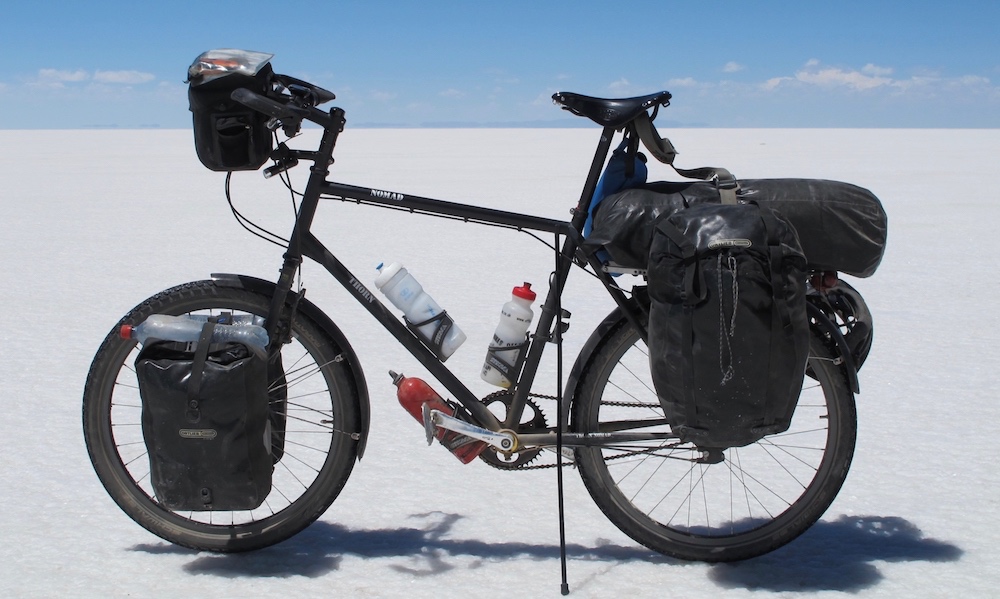
These tentpole-type stands get rave reviews. They’re stable and lightweight. And you don’t need any of the typical kickstand mounting points.
I’ve spent a fair bit of time playing around with them and they do work. But I find the assembly and disassembly to be a little inconvenient when compared to a spring-loaded kickstand, and as a result, I use them much less frequently.
Kickstand Parts

Surly Long Haul Trucker Mount Plates
After years of condemning kickstands fitted to Surly LHT and Disc Trucker frames, Surly started manufacturing kickstand plates to fit centre kickstands.
Surly Kickstand Adapters for Troll, Ogre, ECR
This is a really cool set of two 3D printed stainless steel parts (part 1 + part 2) that will mount a KSA-18 kickstand onto Surly Troll, Ogre and ECR dropouts. To complete the kit you will also need to pick up 2x M6 stainless steel 30mm bolts/nuts from your local hardware store. Note: these parts will not fit with a Rohloff hub using the external gear mech.


